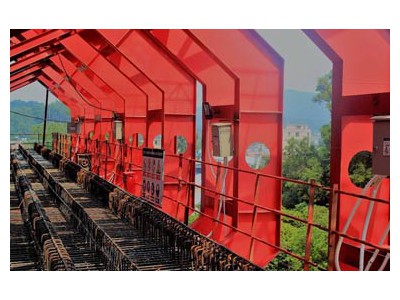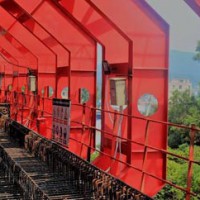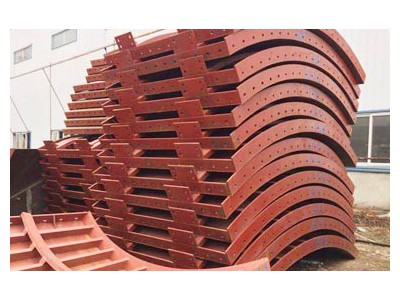The mobile formwork bridge building machine is a kind of self-contained formwork, and uses the platform or pier column as the support to cast the bridge on-site.
Features: Good construction quality, simple construction operation, low cost, etc. In foreign countries, it has been widely used in the continuous beam construction of highway bridges and railway bridges, and it is a relatively advanced construction method. Domestically, it has begun to be used on expressways and railway passenger dedicated lines. Composition build:
It consists of outrigger mechanism, supporting truss girder, internal and external formwork, and main girder lifting mechanism. It can complete a series of constructions from moving the support to pouring and forming.
The structure and assembly requirements of the mobile mold base
1. The pier-side bracket and floor stand of the mobile formwork should have sufficient strength, rigidity and stability, and the foundation must be solid and stable;
2. The movable mold base for the whole hole system and the movable bracket for stage assembly
Before assembling this time, the integrity of each part must be checked. After the assembly is completed, a comprehensive inspection and test shall be carried out, and the design requirements shall be met before it can be put into use.
3. The anti-overturning stability coefficient of the longitudinal forward movement of the mobile formwork and the mobile support shall not be less than 1.5.
4. The mobile formwork and the mobile support used for segment assembly, (wet joints and dry joints) should be stabilized when the pier and the main truss of the temporary pier are moved forward. The slideway should have sufficient strength, rigidity, And length and width.
5. Assembling of the corbel: The corbel is in the form of a steel box girder. When the corbel is hoisted, the top surface of the corbel is leveled with a level to make the propelling flat car slide smoothly on the top surface of the corbel.
6. Installation of main girder: The main girder is assembled under the bridge. According to the lifting capacity on site, the main girder can be hoisted in sections on the corbels and brackets by setting up temporary brackets. Remove the temporary support after assembling. It is also possible to use a large tonnage crane to hoist in place after all the main beams are assembled.
7. Assembling of beams and external formwork: After the main beams are assembled, the beams are then assembled. After all the beams are installed, the main beams are accurately positioned in the transverse and forward directions under the action of the hydraulic system. Release the bridge axis in the center of the pier, adjust the beam according to the direction of the bridge axis, and connect it with a pin. Then lay the bottom plate and outer web, ribs and flange plates.
8. Template assembly sequence: the mobile support system is assembled according to the following procedures: the assembly of the corbel, the assembly of the main beam and the installation of related construction equipment and machinery-the installation of the corbel-the hoisting of the main beam , Synchronous horizontal movement and closing ----- Installation of beams ----- Laying of bottom plate, installation of template brackets-Installation of outer webs and flange plates, bottom plate ----- Installation of inner mold (in the lashing After rebar).











